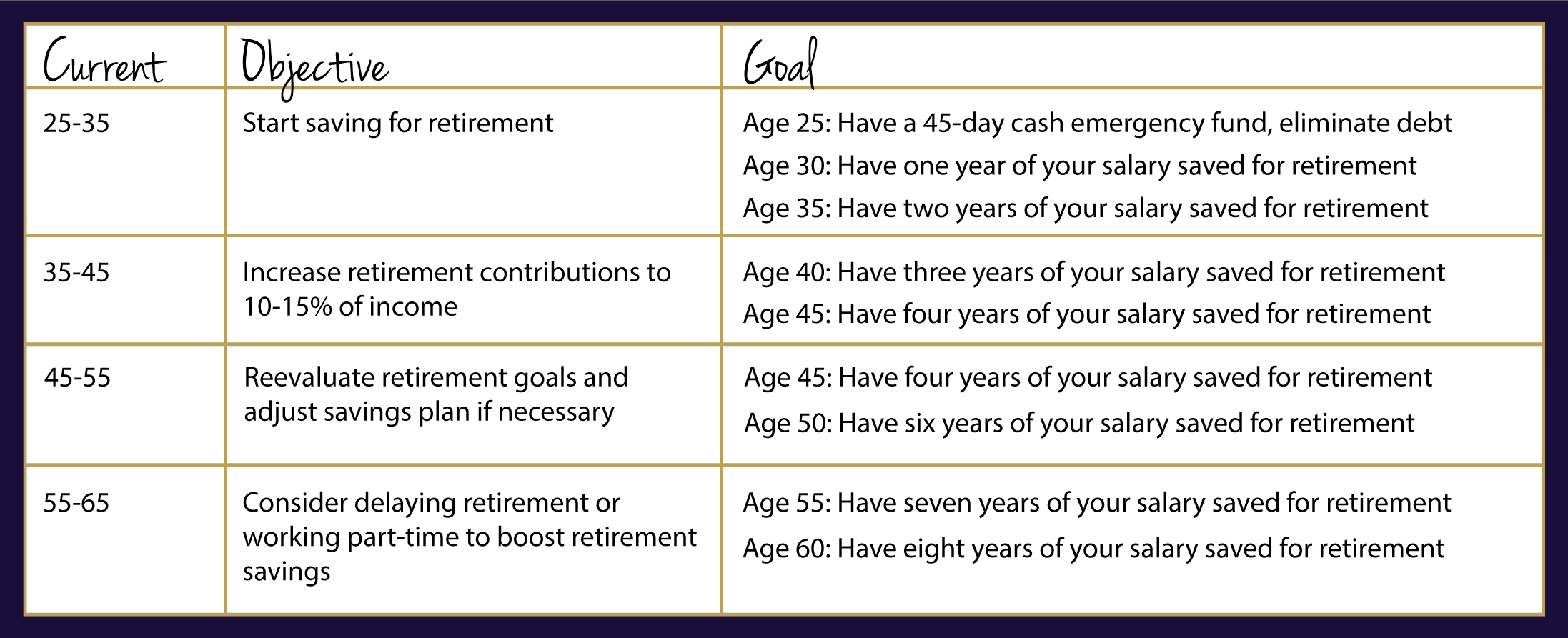Ready to spring into retirement?
Ready to spring into retirement? Are you on track financially? From investing in yourself and building solid financial habits in your 20s to determining when to take Social Security, each decade of your life brings a new opportunity to meet your short and long-term financial goals. Retirement can be a daunting thought, but it’s important to start planning for it early to ensure a comfortable and stress-free retirement. Remember, it’s never too early or too late to start planning for retirement. Here’s a guide to help you understand if you’re on track for retirement.
How much do you need to save to achieve your retirement goals? There are several retirement calculators available here that can help you estimate how much you’ll need to save. Once you have an idea of how much you need to save, you can create a plan to achieve your retirement goals.
Determine your retirement goals
This includes how much money you need to have saved by the time you retire, the age at which you plan to retire, and your expected retirement expenses. This is what we do in our first stage of planning with clients. We ask the questions, and help you discover the answers that work for you and your goals.
Assess your retirement savings
Once you know your retirement goals, the next step is to assess your retirement savings. This includes any retirement accounts you have, such as 401(k)s or IRAs, as well as any other investments you have earmarked for retirement. We will also review all of your accounts. The reason you work with a retirement specialist is so that you can know where you currently stand.
Check your progress regularly
It’s important to check your progress regularly to ensure you’re on track for retirement. We will monitor your retirement savings and adjust your plan as needed. Meeting with advisor will take the stress out of the decision-making. If you’re not on track, you may need to increase your retirement contributions or adjust your retirement goals.
One useful tool for tracking your retirement progress is a milestone chart. This chart shows the key milestones you need to reach at different ages to be on track for retirement at age 65. Here’s an example:

It’s important to note that these milestones are just a general guide, and everyone’s retirement needs are different. Some people may need to save more or less depending on their retirement goals, lifestyle, and other factors. The takeaway of this article is to have a plan for retirement.
Another key factor in determining if you’re on track for retirement is your retirement savings rate. Ideally, you should aim to save at least 10-15% of your income for retirement. If you’re not currently saving at that rate, consider increasing your contributions. Additionally, it’s important to regularly review your retirement plan and adjust as necessary. Life circumstances can change, and it’s essential to make sure that your retirement plan reflects those changes.
In conclusion, if you’re following a retirement plan and regularly contributing to your retirement accounts, you’re likely on track for retirement. Use a milestone chart to help you stay on track, but remember that your retirement needs are unique. Regularly review your retirement. The following article has lots of great details on this topic.



